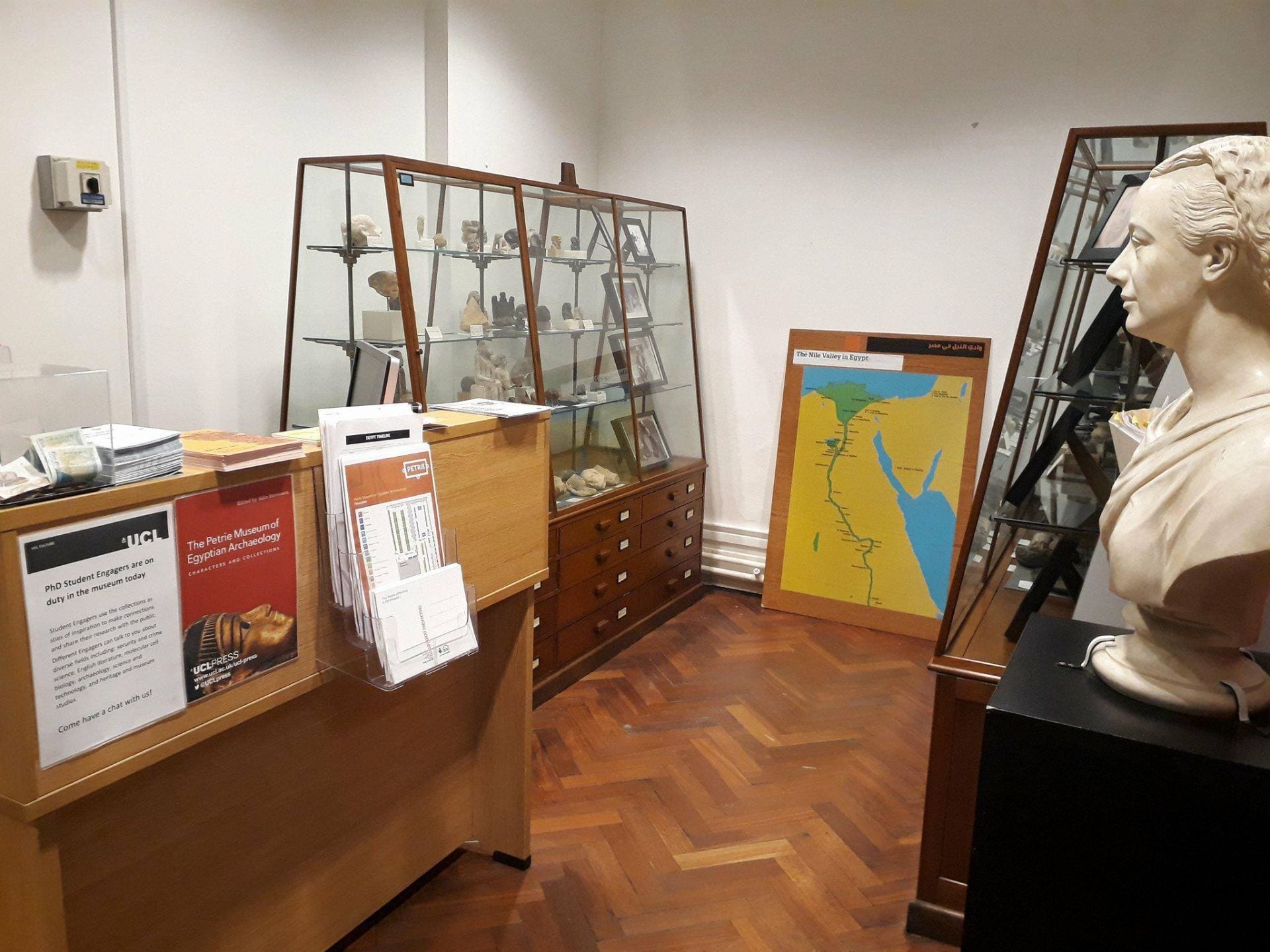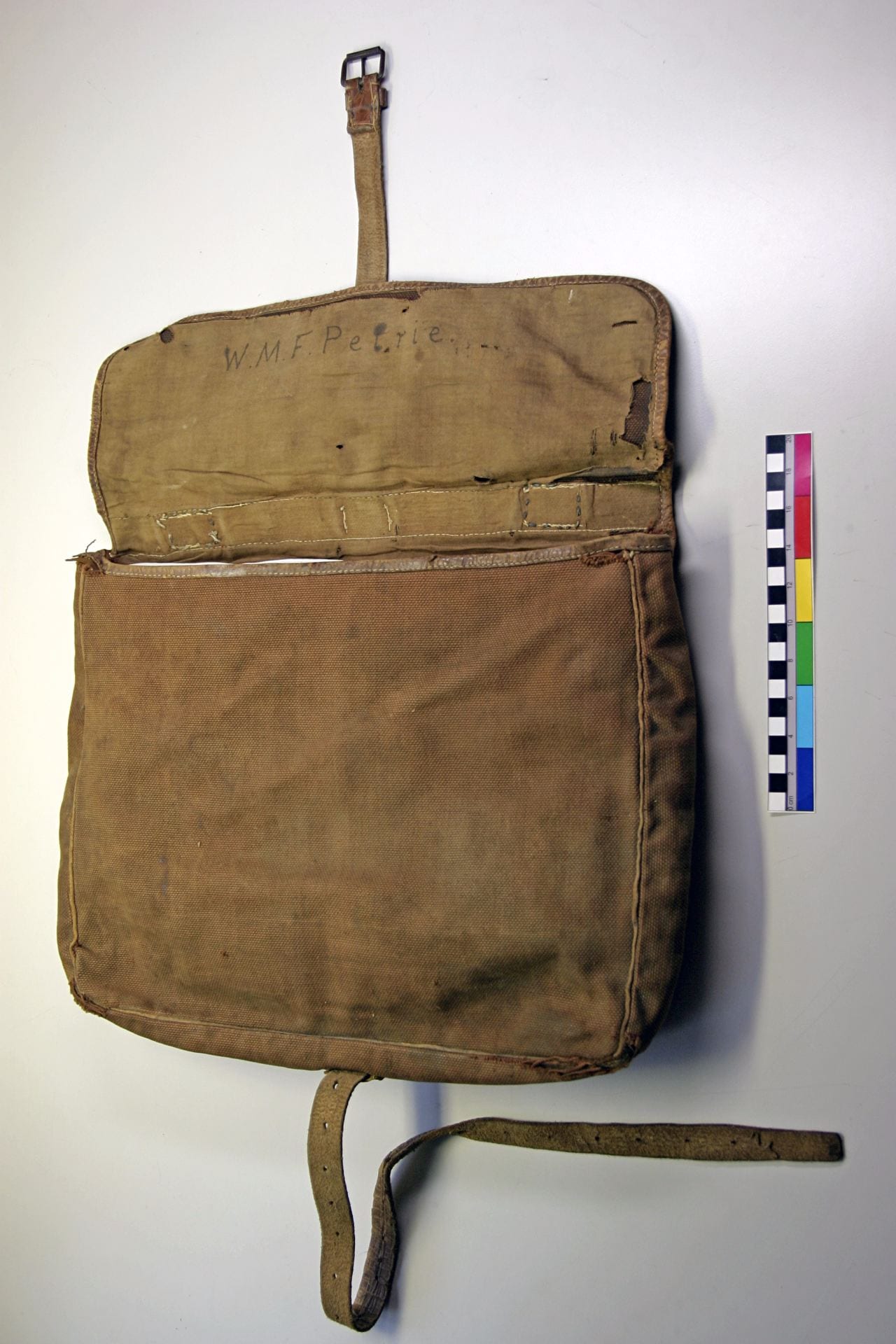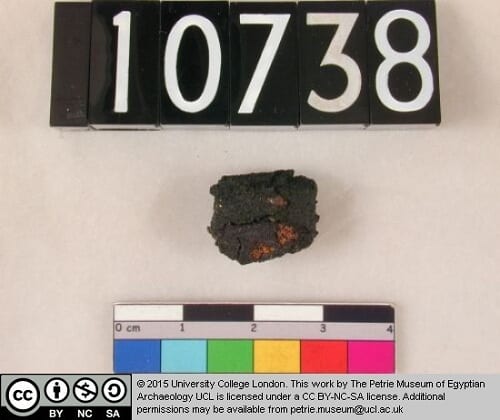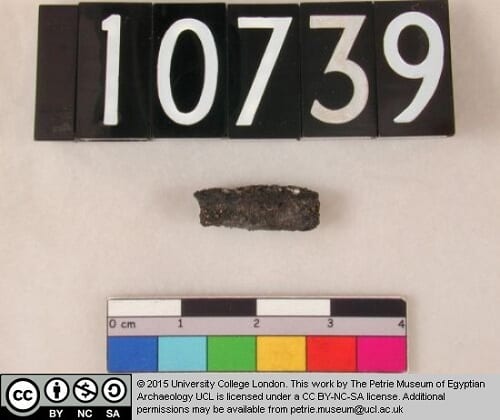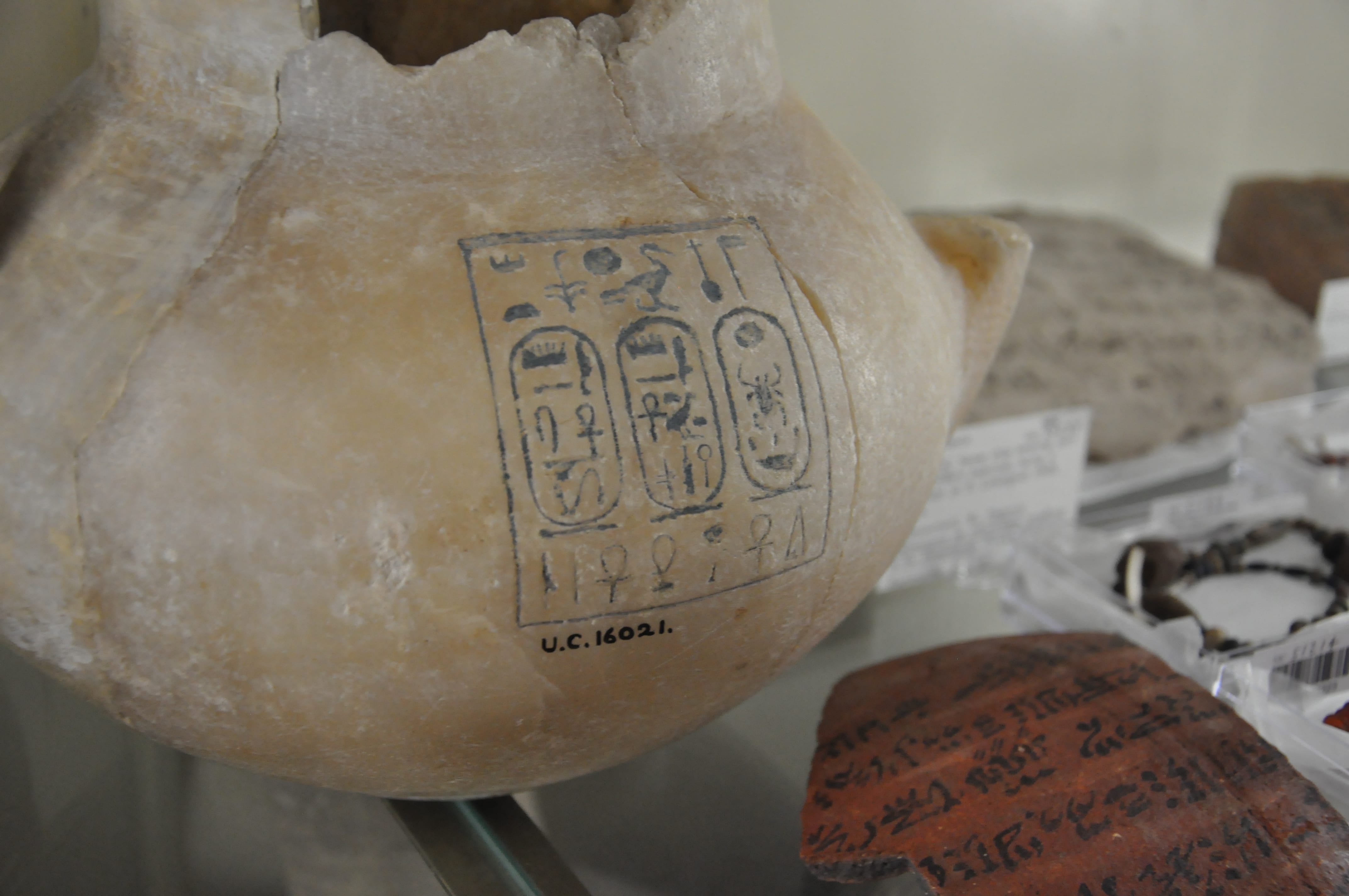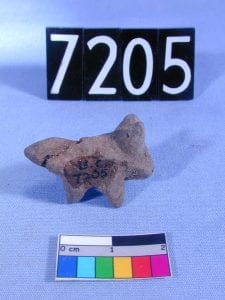Petrie and Edwards: Gateway to the World of Egyptology
By Anna E Garnett, on 16 April 2019
In January 2019, we were delighted to receive a grant of £110,000 from the DCMS/Wolfson Museums and Galleries Improvement Fund for our project proposal: ‘Petrie and Edwards: Gateway to the World of Egyptology’. The aim of this project is to completely redesign the Petrie Museum’s entrance gallery to create a much more welcoming entrance to the Museum. The current entrance is somewhat cramped and cluttered, with much of the space occupied by an office. There is very little room for visitors to dwell and, more importantly, the layout is completely inaccessible to wheelchair users. The scope of this project is to remove the office infrastructure and use the expanded gallery space to make the entrance more accessible. While our access route for visitors will remain available via the DMS Watson Science Library next door to the Petrie Museum, this project will create a much clearer pathway through the Museum for visitors to reach the entrance gallery.
Here, visitors will find a clear introduction to the Petrie Museum’s world-class collection that will celebrate the life and work of the Museum’s founders, Sir William Matthew Flinders Petrie and Amelia Blanford Edwards, as well as other lesser-known characters who are integral to the history of the Petrie Museum. These new displays will also promote critical engagement with the collections, and the history of the Museum, through the presentation of new research. Modern, conservation-standard cases will provide opportunities for expanded, fresh interpretation and allow us to develop new object displays.
These displays will integrate images and documents from the Petrie Museum’s internationally important archive and personal items that have never been displayed before, including Petrie’s excavation satchel and tools. The space will continue to incorporate our Audio Described guide to the Museum, made in collaboration with VocalEyes and available for free download, so the new displays will also be accessible for our visually impaired visitors.
With this project, visitors will have the opportunity to explore a new ‘gateway’ space where they will acquaint themselves with Petrie, Edwards, and other characters from the history of the Museum, before moving into the main galleries to see the stunning results of Petrie’s excavations. We will also enhance visitor orientation as part of this project, including new signage, which we hope will make finding the Museum much more straightforward.
Over the coming year we will present more information on the project in the Museum, which will include new temporary panels in the entrance stairwell to make visitors aware of the upcoming changes to the space. During the period when the major entrance refit will be happening later in 2019, we will be closing the Petrie Museum for a short time to allow this work to happen safely. We will post updates on this closure period in due course, to support visitors planning their visit around this time.
We hope that this project will significantly improve the overall visitor experience by offering an accessible introduction to the collection that explores historical and contemporary issues and facilitates engagement for all. So watch this space!
Anna Garnett is the Curator of the Petrie Museum of Egyptian Archaeology, UCL
 Close
Close


